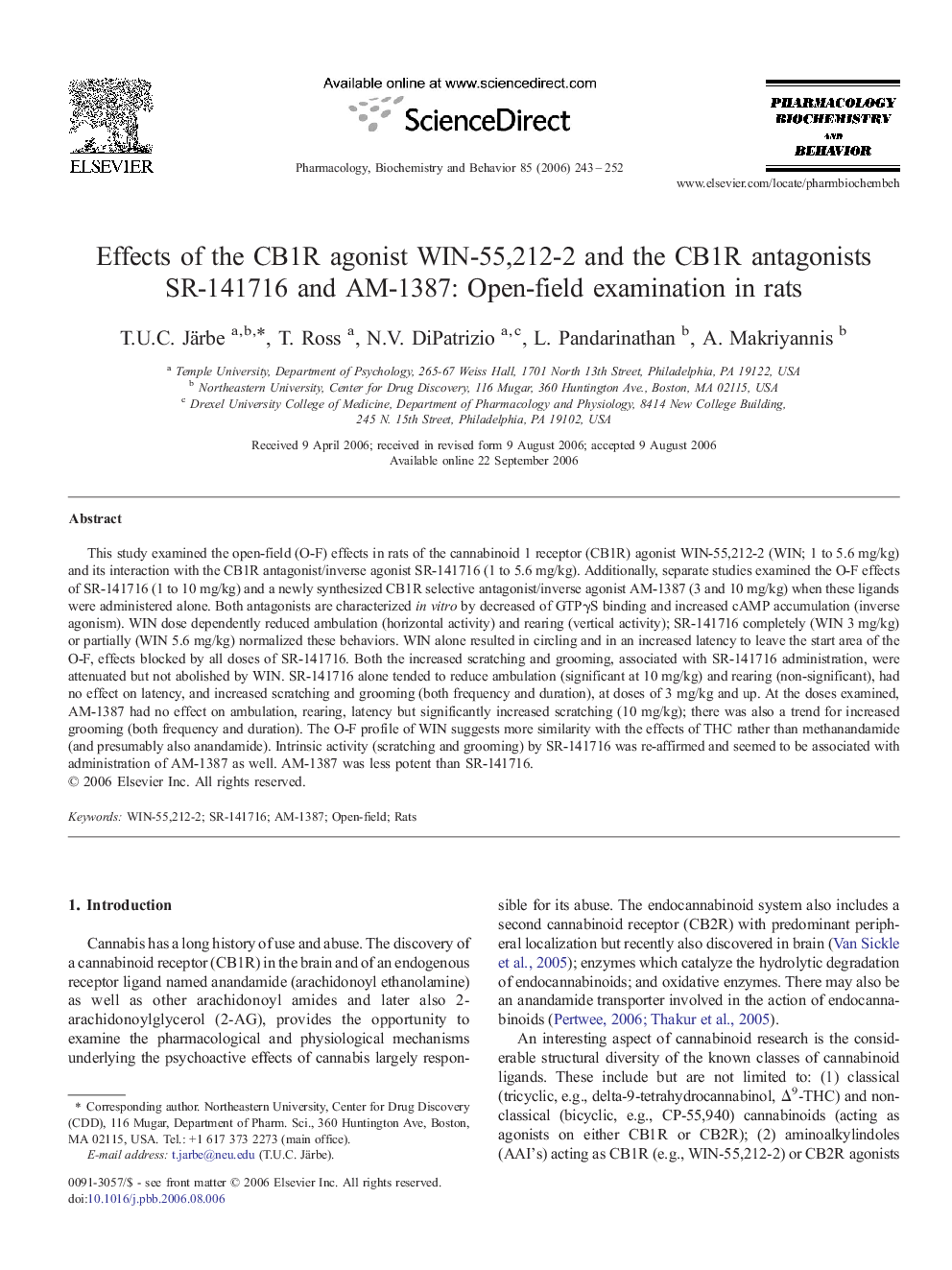| Article ID | Journal | Published Year | Pages | File Type |
|---|---|---|---|---|
| 2014507 | Pharmacology Biochemistry and Behavior | 2006 | 10 Pages |
This study examined the open-field (O-F) effects in rats of the cannabinoid 1 receptor (CB1R) agonist WIN-55,212-2 (WIN; 1 to 5.6 mg/kg) and its interaction with the CB1R antagonist/inverse agonist SR-141716 (1 to 5.6 mg/kg). Additionally, separate studies examined the O-F effects of SR-141716 (1 to 10 mg/kg) and a newly synthesized CB1R selective antagonist/inverse agonist AM-1387 (3 and 10 mg/kg) when these ligands were administered alone. Both antagonists are characterized in vitro by decreased of GTPγS binding and increased cAMP accumulation (inverse agonism). WIN dose dependently reduced ambulation (horizontal activity) and rearing (vertical activity); SR-141716 completely (WIN 3 mg/kg) or partially (WIN 5.6 mg/kg) normalized these behaviors. WIN alone resulted in circling and in an increased latency to leave the start area of the O-F, effects blocked by all doses of SR-141716. Both the increased scratching and grooming, associated with SR-141716 administration, were attenuated but not abolished by WIN. SR-141716 alone tended to reduce ambulation (significant at 10 mg/kg) and rearing (non-significant), had no effect on latency, and increased scratching and grooming (both frequency and duration), at doses of 3 mg/kg and up. At the doses examined, AM-1387 had no effect on ambulation, rearing, latency but significantly increased scratching (10 mg/kg); there was also a trend for increased grooming (both frequency and duration). The O-F profile of WIN suggests more similarity with the effects of THC rather than methanandamide (and presumably also anandamide). Intrinsic activity (scratching and grooming) by SR-141716 was re-affirmed and seemed to be associated with administration of AM-1387 as well. AM-1387 was less potent than SR-141716.
